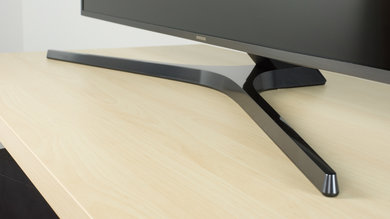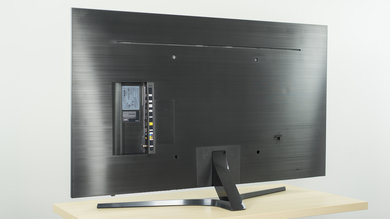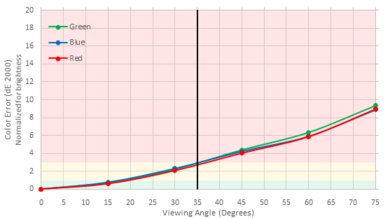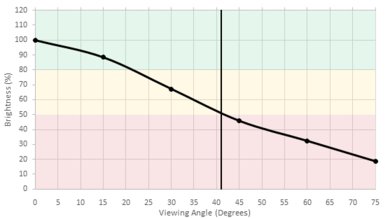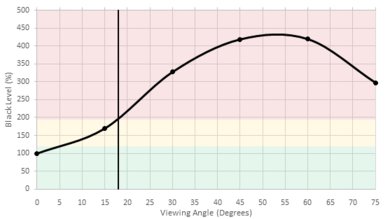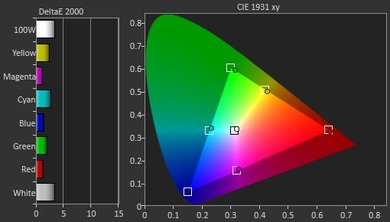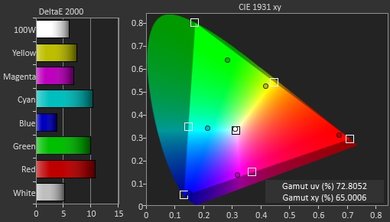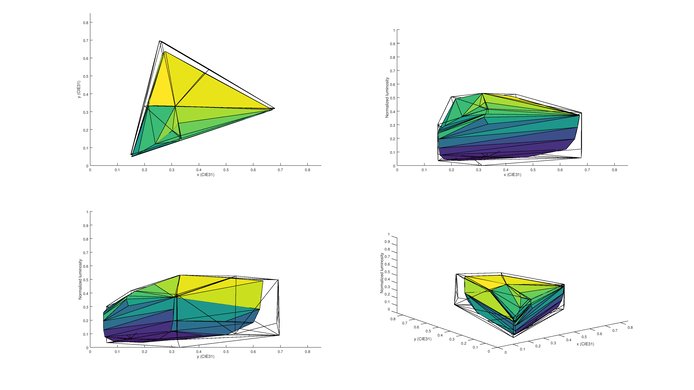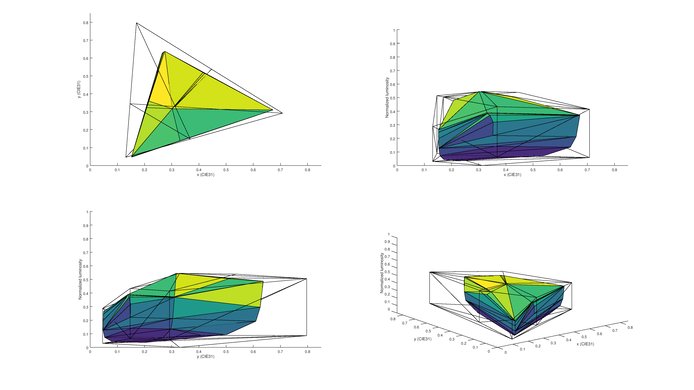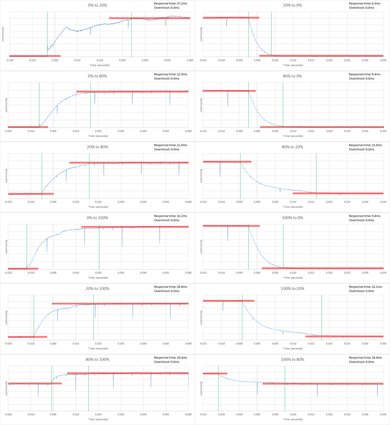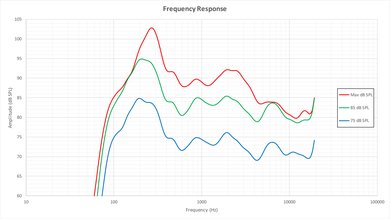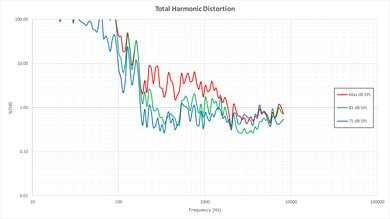Our Verdict
The Samsung KU7000 is a decent TV with a few flaws. It is good for playing video games and sports fans won't complain but movie lovers might be bothered by the small amount of judder and the limited HDR performance. When viewed from the side, the picture of the KU7000 also deteriorates. In the end, the Samsung KU7000 is not easy to recommend since the KU6300 is cheaper and has the same picture quality. If you were looking for an improvement, go with the KS8000 instead.
- Better than average uniformity
- Good TV for playing video games
- Judder is present in movies
- HDR performance is limited
- Picture deteriorates when viewed from the side
Check Price
Differences Between Sizes And Variants
We tested the 55" (UN55KU7000) version FA01. For the most part, we expect our review to be valid for the other sizes.
If someone comes across a different type of panel or if their Samsung KU7000 doesn't correspond to our review, let us know and we will update the review.
Update 01/16/2017: The 43" has a AA01 panel, so our review might not correspond exactly to that size.
| Size | Model | US | Canada | UK | Warehouse | Warehouse long |
| 40" | UN40KU7000 | UN40KU7000FXZA | UN40KU7000FXZC | UE40KU6400 | N/A | N/A |
| 43" | UN43KU7000 | UN43KU7000FXZA | UN43KU7000FXZC | UE43KU6400 | N/A | N/A |
| 49" | UN49KU7000 | UN49KU7000FXZA | UN49KU7000FXZC | UE49KU6400 | N/A | N/A |
| 55" | UN55KU7000 | UN55KU7000FXZA | UN55KU7000FXZC | UE55KU6400 | UN55KU700D | UN55KU700DFXZA |
| 65" | UN65KU7000 | UN65KU7000FXZA | UN65KU7000FXZC | UE65KU6400 | UN65KU700D | UN55KU700DFXZA |
Popular TV Comparisons

The Samsung KU7000 is hard to recommend when cheaper TVs offer similar performances with a better value.

We buy and test dozens of TVs yearly, taking an objective, data-driven approach to deliver results you can trust. Our testing process is complex, with hundreds of individual tests that take over a week to complete. Most of our tests are done with specially designed test patterns that mimic real content, but we also use the same sources you have at home to ensure our results match the real-world experience. We use two main tools for our testing: a Colorimetry Research CR-100 colorimeter and a CR-250 spectroradiometer.
Test Results
The Samsung KU7000 is a great looking TV. Its frame looks like it is made of metal, the classic looking Samsung stand now shares a new style with a shiny reflective finish and the textured back of the TV adds a nice touch. The TV is also quite thin. Compared to the KU6300, it looks better.
There is no local dimming on the KU7000. For reference, we took a video of our test. The backlight is edge lit, unlike the KU6300 which has a direct backlight.
The SDR peak brightness is bad for the Samsung KU7000. At around 300 cd/m² overall, with the 2% and 10% being dimmer than the rest, the SDR peak brightness is lower than what would be considered a good value. The KU7000 would be best situated in a dark room because of the low SDR peak brightness.
The KU7000 is bright enough for normal SDR content but well below the HDR standard of 1000 nits for highlights. There is no local dimming. With an HDR signal, the 2% window dims, but on a standard signal, the brightness remains constant across all window sizes. The peak brightness is lower than the KU6300.
Update: Updated with sustained brightness.
Update 11/09/2016: Our original test was showing 8 bit gradations due to incorrect drivers on our system. After some correction to our test apparatus, we have retested the color depth and found that it is able to display a 10 bit gradient smoothly. There is some little imperfections in the darker green, but nothing that could make normal viewing problematic.
The response time of this TV is similar to that of the Samsung KU6300 because they have a similar panel. A faint trail is visible behind the logo meaning that fast moving object will appear to have a following trail behind them just like this one. The backlight flickers at twice the frequency of the KU6300.
The TV was not able to remove judder when 24p content is played through any input source. Those sensitive to it will notice judder when watching movies.
The input lag of the KU7000 is great, enable 'Game Mode' in 'Special viewing modes' to reduce it as low as possible.
Update 09/08/2016: In 'Game Mode', when sending an HDR signal at 1080p resolution, the input lag remain the same at 24.7ms
Enable 'UHD Colors' for 4:4:4 at 4k and 60Hz on HDMI1. This is not possible on HDMI2 or HDMI3. Text becomes more clear when sending a 4:4:4 signal. 120Hz input is not supported.
HDMI 2.0 full bandwidth is only available on HDMI1.
Decent frequency response, low-end cutoff and maximum loudness for a TV. The responses at 75dB and 85dB SPL are pretty good, however, at maximum volume pumping and compression are present.
The Samsung KU7000 offers an impressive smart interface performance that is both smooth and responsive. The TV comes with a fairly fast CPU and memory which allows applications to load quickly even when heavily multi-tasking, showing no hiccups at all. Also, the operating system supports a great deal of different applications such as Netflix, Amazon Video, Youtube, and many more, making it a very polished smart interface. As for the inputs, the Samsung TV offers many inputs of different variations making it capable of plugging all your devices in it. Be careful though, if you want to use the full capability of the TV make sure you use the HDMI 1 port as it's the only port that supports HDMI 2.0.
When a new device is detected (such as when a computer is woken from sleep while plugged into an HDMI port) the TV automatically switches to this device. This may be an annoyance if you are watching other content at the time.
The remote is identical to the Samsung KS Series remote. It's comfortable and is very easy to use to navigate through menus. It also has the voice command functionality that the KS Series remote has, which is a nice addition. This remote, compared to the Samsung KU6300, is somewhat better and has the voice command functionality.


